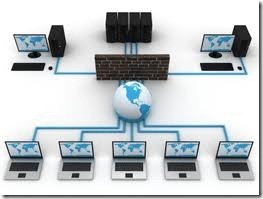Applications of Information Technology
Imaging Systems
we’ve learned that computers store data in the form of binary digits, 1s and 0s, and that these can be translated to and from the numbers and words we use our computers to work on. But images? How would a computer handle them a data-s-and why?
Image Processing Applications
let’s look at the ”why" first. Some businesses must Work with literally cons of paper on it daily basis . A giant company like American Express, for example, rakes in millions of credit card slips each day from merchant Sorts the data by account, and computes invoices for Customers and payments for merchants. At one time, American Express physically moved the actual charge slips from point to point during processing and returned them with the invoice to the customer . Now the slip is translated into an electronic image, processed and stored as an image , and the customer gets a copy of that image with the invoice. the result is efficiency .American Express cuts down on handling time and Costs. warehouse storage space. personnel and postage (the reconstructed images on the bills Me smaller and Weigh less).
in other applications, efficiency also can mean being able to do something at all rather than just. more cheaply. In Downers Grove, Illinois , a gas station attendant was robbed and killed recently. The police were Image Processing and Health Care At this hospital. The images of the birth certificates are maintained on a computer-based file with medical information .
unable to recognize the assailant’s face by viewing the videotape from a surveillance camera. but they saw him take and drop cigarette packs , and from one pack they got a fingerprint. The Illinois Stare Police entered the fingerprint into an imaging system, called the Automated Fingerprint Identification System. Comparing the fingerprint from the cigarette pack With nearly 2 million others stored
by the system, a match was found-and within hours the police had the name of the killer. Searching this quantity of fingerprints the old way by hand, would have been impossible.
The list of image processing systems is growing: every day. Image processing is used by aircraft builders to store blueprints ,and safety documents required when designing a new plane. Hospitals use it to handle patient
Image Processing and Crime Computers take only a few minutes to check fingerprints from the scene of a crime against a large database of fingerprints – often with great success .
records. Even submarines use it to thread their way among the hazards of the ocean floor
The Hardware
In image processing , an image scanner "digi-tizes” the text, numbers, fingerprints , signa-tures , or whatever appears on the input paper document. a processor compresses or squeezes out any unneeded space in the dig-itized images to make the most efficient use of expensive secondary storage. Because dig-itized images take up more storage space than straightforward text and some imaging systems handle millions of images, high-capacity optical disk is often the preferred storage medium. Unneeded, the input document can be shredded. To get an image out of the system, the computer decompresses it so that a copy of the original can be viewed on a screen or printed
Computers Large and Small
Major imaging systems such as that used by American Express cost millions of dollars. However, not all imaging systems cost millions. PCs configured with an Image scanner, imaging software, and plenty of RAM and secondary storage can handle imaging. A PC – based imaging system works more slowly. but it costs only about $20,000. In the years to come, the use of imaging may result in the paperless office.

